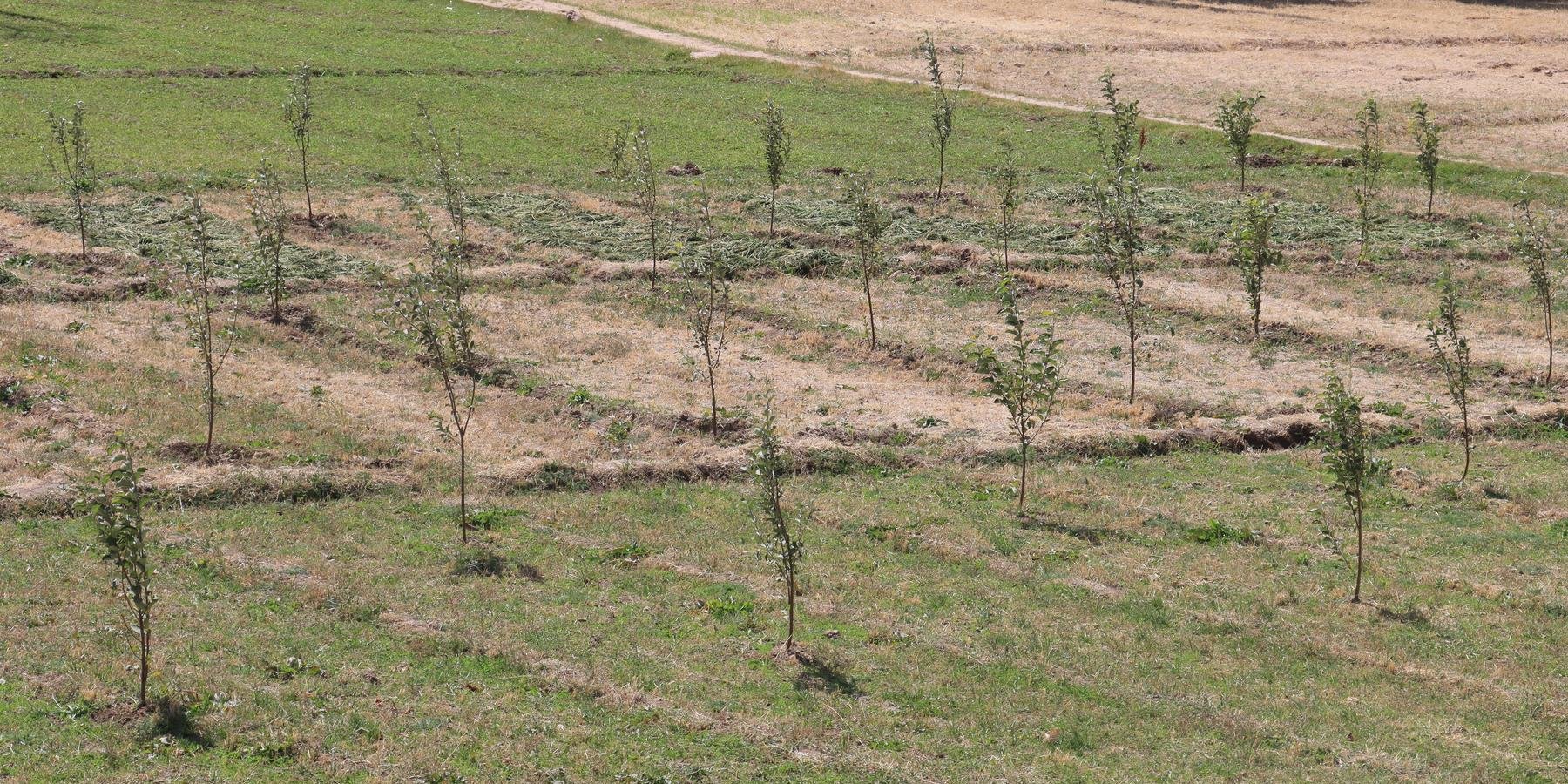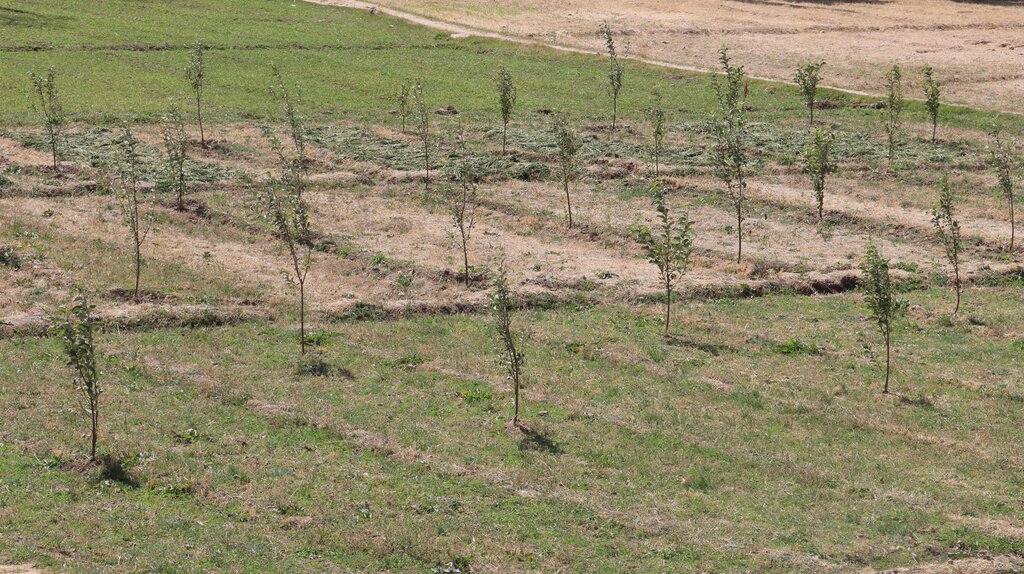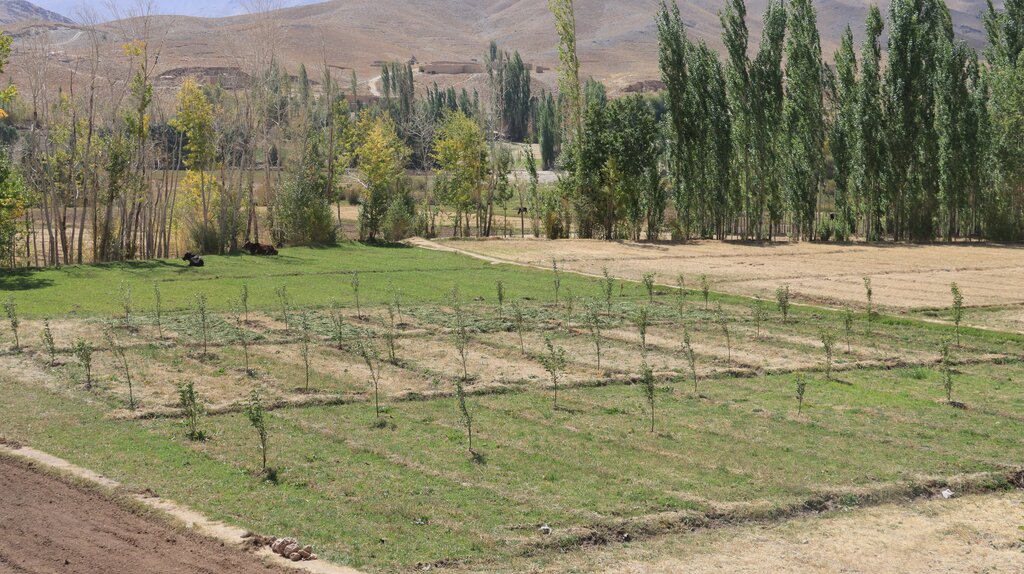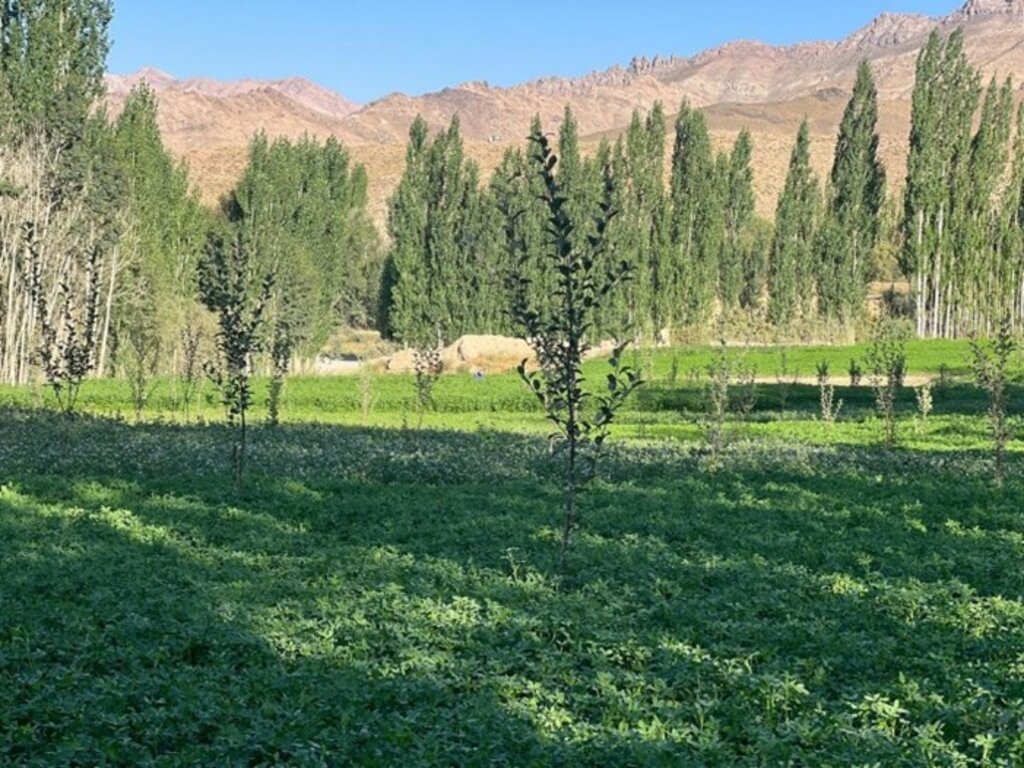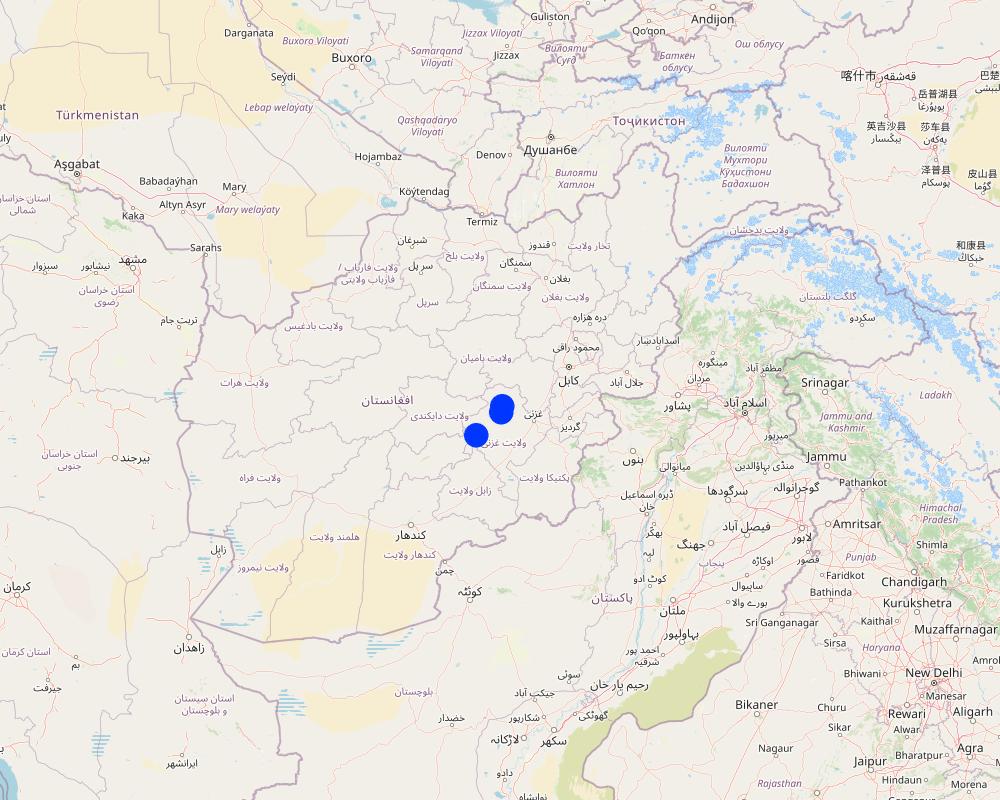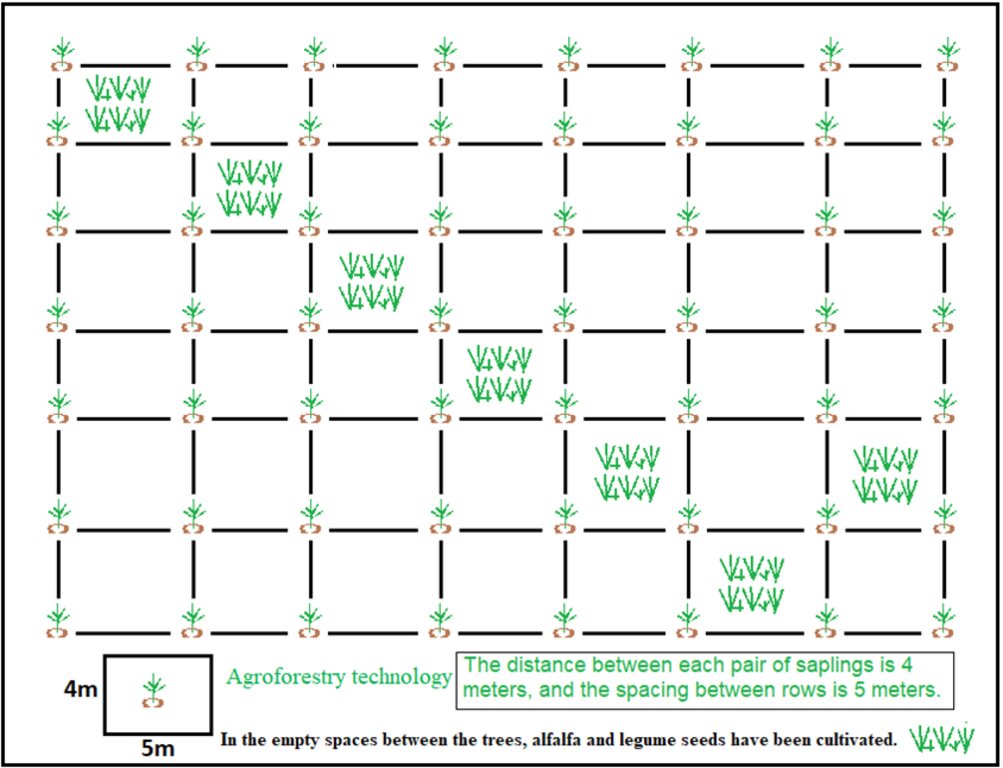Agroforestry to improve soil fertility, water retention, and sustainable income for local communities [Afeganistão]
- Criação:
- Atualização:
- Compilador/a: Ahmad Zia Jalalzai
- Editores: Mohammad Amin Nesar, Megha bajaj, Mir Wali Khan Lakanwal
- Revisores: Rima Mekdaschi Studer, Illias Animon, Muhammad Ishaq Safi
د خاورې د خاصلخيزۍ ودې، اوبو ذخيره کولو او محلي ټولنو له پاره د دوامداره عايد په موخه د کرنيزې ځنګلدارۍ قطعو جوړول /ایجاد پلات زراعت جنگلی برای بهبود سلامت خاک، نگهداری آب و تأمین درآمد پایدار برای جوامع محلی
technologies_7443 - Afeganistão
Veja as seções
Expandir tudo Recolher tudo1. Informação geral
1.2 Detalhes do contato das pessoas capacitadas e instituições envolvidas na avaliação e documentação da tecnologia
Especialista em GST:
Especialista em GST:
Andar Ahmadullah
FAO Afghanistan
Afeganistão
usuário de terra:
Mohammad Haider
Ghaibi Rangeland Management Association (RMA)
Afeganistão
usuário de terra:
Ghullam Sakhi
Qarcha Rangeland Management Association (RMA)
Afeganistão
Nome do projeto que facilitou a documentação/avaliação da Tecnologia (se relevante)
Community-based sustainable land and forest management in AfghanistanNome da(s) instituição(ões) que facilitou(ram) a documentação/ avaliação da Tecnologia (se relevante)
FAO Afghanistan (FAO Afghanistan) - Afeganistão1.3 Condições em relação ao uso da informação documentada através de WOCAT
O/a compilador/a e a(s) pessoa(s) capacitada(s) aceitam as condições relativas ao uso de dados documentados através da WOCAT:
Sim
1.4 Declaração de sustentabilidade da tecnologia descrita
A tecnologia descrita aqui é problemática em relação a degradação da terra de forma que não pode ser declarada uma tecnologia de gestão sustentável de terra?
Não
Comentários:
This technology is applied with a focus on land restoration and conservation and is not problamatic with regard to land degradation.
2. Descrição da tecnologia de GST
2.1 Descrição curta da tecnologia
Definição da tecnologia:
The Agroforestry system in Malistan district combines traditional practices with support from the Community-Based Sustainable Land and Forest Management project in Afghanistan. This initiative provides technical support, training, and resources like apple trees, fertilizers, and alfalfa seeds to establish 400 orchards (1,000 m² each). The goal is to enhance community livelihoods by reducing dependence on rangelands, helping to preserve local ecosystems.
2.2 Descrição detalhada da tecnologia
Descrição:
The agroforestry system adopted in the mountainous districts of Ghazni province, particularly in Navor and Malistan district is an innovative approach that is transforming the way local farmers cultivate their land. This system integrates agricultural crops, tree cultivation, and livestock farming to maximize land productivity while promoting environmental sustainability. At the heart of the system are apple orchards, alfalfa seeds, and fertilizers, which work together to enhance food security, provide livestock feed, and improve soil fertility. Supported by modern agricultural techniques, the project includes a total of 400 orchards, each covering 1,000 square meters, helping to alleviate pressure on overgrazed rangelands while improving local livelihoods.
This agroforestry method is particularly well-suited to Ghazni’s rugged terrain, where farming communities rely heavily on livestock and rangelands for sustenance. However, the region’s dry climate, frequent overgrazing, and ongoing land degradation have made traditional farming increasingly unsustainable. By introducing apple trees and alfalfa cultivation, farmers now have an alternative source of income and animal feed while actively restoring degraded lands. Alfalfa serves as a nutrient-rich fodder for livestock, and in return, livestock manure is used as fertilizer, creating a self-sustaining agricultural cycle that enhances soil health.
Beyond its environmental benefits, this system plays a crucial role in improving livelihoods. By diversifying agricultural production, it enhances food security and generates additional income for local farmers. More importantly, it helps alleviate the burden on fragile rangelands by offering an alternative source of livestock feed, reducing overgrazing and preventing further land degradation. Through natural nutrient recycling, alfalfa provides essential fodder for livestock, while their manure replenishes soil nutrients, ensuring long-term soil fertility.
To successfully implement and maintain this system, several key activities and inputs are required. Local farmers receive specialized training and technical support to equip them with the necessary skills. Essential supplies, including apple saplings, fertilizers, and alfalfa seeds, are provided to help establish the orchards. Additionally, proper maintenance, such as irrigation, pruning, and weed control, ensures that the orchards remain productive. Soil and water conservation efforts, such as constructing contour banks and water diversion structures, further safeguard the land against erosion and water loss.
The impact of this technology extends far beyond the fields. Environmentally, it significantly reduces soil erosion, improves water retention, and restores soil health. Economically, it increases household income by boosting apple production and generating sales from alfalfa as livestock feed. Socially, it strengthens community resilience by offering a reliable source of food and income, while encouraging the adoption of sustainable farming practices.
While many farmers appreciate the system for its cost-effectiveness, sustainability, and diverse benefits, some challenges remain. Because of the duration for fruit production of apple trees are typically taking three to four years to bear fruit, patience and long-term planning is crucial. Additionally, the dry climate means that farmers must invest extra time and effort in irrigation, especially during drought periods, to ensure optimal growth and fruit yield. Despite these challenges, the agroforestry system in Malistan and Navor presents a promising solution for sustainable land management and rural development.
2.3 Fotos da tecnologia
2.4 Vídeos da tecnologia
Comentários, breve descrição:
Artificial reseeding plays a vital role in the restoration of degraded rangeland ecosystems. Reseeding of local palatable fodder species in degraded rangeland is a restoration technique aimed at reintroducing native plants that support soil health and local biodiversity. This process enhances forage availability for grazing animals, stabilizes soil, and helps combat desertification by promoting sustainable vegetation cover. By using palatable, locally adapted species, artificial reseeding improves the health and productivity of degraded rangeland ecosystem.
Data:
20 october 2023
Localização:
Malistan district Mokly village.
Nome do cinegrafista:
Ahmad Zia Jalalzai
2.5 País/região/locais onde a tecnologia foi aplicada e que estão cobertos nesta avaliação
País:
Afeganistão
Região/Estado/Província:
Southeastern Ghazni province
Especificação adicional de localização:
The technology is applied in 44 villages through 7 Rangeland Management Associations (RMAs). Hemat and Faqir are sample villages reflected in the map.
Especifique a difusão da tecnologia:
- Aplicado em pontos específicos/concentrado numa pequena área
O(s) local(is) tecnológico(s) está(ão) localizado(s) em uma área permanentemente protegida?
Não
Comentários:
This project established 400 agroforestry plots (for 400 land users); the coordinates represent the samples locations for 400 orchards.
Map
×2.6 Data da implementação
Indique o ano de implementação:
2022
2.7 Introdução da tecnologia
Especifique como a tecnologia foi introduzida:
- através de projetos/intervenções externas
Comentários (tipos de projeto, etc.):
The agroforestry system was introduced as an innovative, community-driven approach, offering an environmentally friendly alternative. This initiative was developed in response to the community's call for sustainable solutions that enhance livelihoods while preserving natural resources.
The agroforestry system integrates apple tree plantation with alfalfa intercropping, enhancing land productivity and sustainability by providing both fruit and forage. This technology improves livelihoods and promotes soil fertility and moisture retention for long-term environmental benefits
3. Classificação da tecnologia de GST
3.1 Principal/principais finalidade(s) da tecnologia
- Melhora a produção
- Reduz, previne, recupera a degradação do solo
- Atenuar a mudanças climáticas e seus impactos
- Criar impacto econômico benéfico
- Cria impacto social benéfico
3.2 Tipo(s) atualizado(s) de uso da terra onde a tecnologia foi aplicada
Uso do solo misturado dentro da mesma unidade de terra:
Sim
Especificar o uso misto da terra (culturas/ pastoreio/ árvores):
- Agropecuária (incl. agricultura e pecuária)
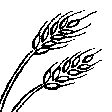
Terra de cultivo
- Cultura perene (não lenhosa)
Cultivo perene (sem lã) - Especificar culturas:
- culturas florais - perenes
Número de estações de cultivo por ano:
- 2
Especifique:
summer and fall season
O cultivo entre culturas é praticado?
Sim
Em caso afirmativo, especifique quais são as culturas intercultivadas:
Alfaalfa is mainly used for intercropping
O rodízio de culturas é praticado?
Não

Pastagem
Pastagem intensiva/produção de forragem:
- Semiestabulação/sem pastagem
Tipo de animal:
- gado - leite e carne bovina (por exemplo, zebu)
É praticado o manejo integrado de culturas e pecuária?
Sim
Caso afirmativo, especifique:
Animal manure is added in the fall season
Produtos e serviços:
- segurança econômica, prestígio dos investimentos
Espécie:
gado - leite e carne bovina (por exemplo, zebu)
Contagem:
1345
Comentários:
In autumn, people in the community graze their land with animals like cattle, sheep and goats. To manage and control the grazing, they use stakes and ropes to fence a specific area of land and ensure that the saplings are not damaged.
Planting of fruit trees helps to reduce pressure on rangeland grasses and shrubs to support landscape restoration.
Most land users plant apple trees and alfalfa. Some land users, who do not have animals, cultivate legumes instead of alfalfa.
3.3 O uso do solo mudou devido à implementação da Tecnologia?
O uso do solo mudou devido à implementação da Tecnologia?
- Sim (Por favor, preencha as perguntas abaixo com relação ao uso do solo antes da implementação da Tecnologia)
Uso do solo misturado dentro da mesma unidade de terra:
Sim
Especificar o uso misto da terra (culturas/ pastoreio/ árvores):
- Agropecuária (incl. agricultura e pecuária)

Terra de cultivo
- Cultura perene (não lenhosa)
Cultivo perene (sem lã) - Especificar culturas:
- culturas florais - perenes
O cultivo entre culturas é praticado?
Sim
Em caso afirmativo, especifique quais são as culturas intercultivadas:
Earlier, wheat was planted only on the cropland and the only grazing land that was overgrazed and it became degraded. Now there is a mixed system agro-pastoralism in place due to the application of the technology.
O rodízio de culturas é praticado?
Não

Pastagem
Pastagem intensiva/produção de forragem:
- Semiestabulação/sem pastagem
Tipo de animal:
- gado - leite e carne bovina (por exemplo, zebu)
É praticado o manejo integrado de culturas e pecuária?
Não
Comentários:
Most land users plant apple trees and alfalfa seeds. Some land users, who do not have animals, cultivate legume intercropping instead of alfalfa.
3.4 Abastecimento de água
Abastecimento de água para a terra na qual a tecnologia é aplicada:
- Misto de precipitação natural-irrigado
Comentários:
Out of the 400 agroforestry plots, some have full water availability, while others have 80% water availability. About 10% of the agroforestry plots receive only 40% to 60% of the required water. The saplings are mainly irrigated by spring rainfall. In a few plots, additional irrigation is provided two to three times during the warm season by transporting water from the canal using animals.
3.5 Grupo de GST ao qual pertence a tecnologia
- Gestão de pastoralismo e pastagem
- Gestão integrada plantação-criação de animais
- Gestão integrada de fertilidade do solo
3.6 Medidas de GST contendo a tecnologia
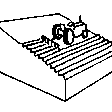
Medidas agronômicas
- A2: Matéria orgânica/fertilidade do solo
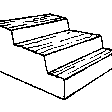
Medidas estruturais
- S2: Barragens, bancos

Medidas de gestão
- M6: Gestão de resíduos (reciclagem, reuso ou redução)
Comentários:
Residue management of trees is used for fuel, and alfalfa is utilized as livestock fodder in winter.
3.7 Principais tipos de degradação da terra abordados pela tecnologia
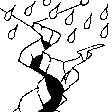
Erosão do solo pela água
- Wt: Perda do solo superficial/erosão de superfície

Erosão do solo pelo vento
- Et: Perda do solo superficial
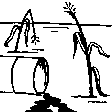
Deteriorização química do solo
- Cn: declínio de fertilidade e teor reduzido de matéria orgânica (não causado pela erosão)
- Ca: acidificação
- Cp: poluição do solo
- Cs: salinização/alcalinização
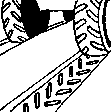
Deteriorização física do solo
- Pc: Compactação
- Pk: quebra e ressecamento
- Pw: estagnação hídrica
- Ps: Subsidência de solos orgânico, sedimentação do solo
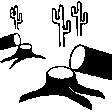
Degradação biológica
- Bc: redução da cobertura vegetal
- Bh: perda dos habitats
- Bq: quantidade/ declínio da biomassa
- Bs: Qualidade e composição de espécies/declínio de diversidade
- Bl: perda da vida do solo
- Bp: aumento de pragas/doenças, perda de predadores
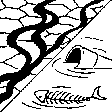
Degradação da água
- Ha: aridificação
- Hg: mudança no lençol freático/aquífero
- Hp: declínio da qualidade de água de superfície
- Hw: redução da capacidade de tamponamento de zonas úmidas
3.8 Redução, prevenção ou recuperação da degradação do solo
Especifique o objetivo da tecnologia em relação a degradação da terra:
- Reduzir a degradação do solo
- Recuperar/reabilitar solo severamente degradado
Comentários:
This project reduced the land degradation by applying this agroforestry technology.
4. Especificações técnicas, implementação de atividades, entradas e custos
4.1 Desenho técnico da tecnologia
Especificações técnicas (relacionada ao desenho técnico):
Saplings are planted in plotted areas with widths ranging from 4 to 5 meters. The outlines of the plots measure 40 × 50 meters, depending on the land structure. The spacing between saplings is 4 meters, with 5 meters between rows. Alfalfa and legume seeds are planted in the gaps. Small plots of 0.1 hectares were used, each containing 50 saplings.
Autor:
Ahmad Zia Jalalzai
Data:
16/10/2024
4.2 Informação geral em relação ao cálculo de entradas e custos
Especifique como custos e entradas foram calculados:
- por área de tecnologia
Indique o tamanho e a unidade de área:
0.1 ha
Especifique a moeda utilizada para os cálculos de custo:
- USD
Indique a média salarial da mão-de-obra contratada por dia:
5 USD
4.3 Atividades de implantação
| Atividade | Periodicidade (estação do ano) | |
|---|---|---|
| 1. | Survey and site selection follow by feasibility study | December to January |
| 2. | Procurement sapling and equipment | December and January |
| 3. | Levelling plots, cleaning from weeds | March |
| 4. | Designing layout | March |
| 5. | Digging planting pits | March |
| 6. | Planating apple saplings | spring |
| 7. | Irrigating | April to September |
| 8. | Training and pruning of orchard | October and Noverber |
4.4 Custos e entradas necessárias para a implantação
| Especifique a entrada | Unidade | Quantidade | Custos por unidade | Custos totais por entrada | % dos custos arcados pelos usuários da terra | |
|---|---|---|---|---|---|---|
| Mão-de-obra | Labour for preparation of plots levelling, digging pits and cleaning weeds | Person/day | 10,0 | 5,0 | 50,0 | 100,0 |
| Mão-de-obra | Labour for plantation | Person/day | 5,0 | 8,0 | 40,0 | 100,0 |
| Equipamento | Shovel | Number | 1,0 | 4,0 | 4,0 | 100,0 |
| Equipamento | Rope | Meter | 1,0 | 2,0 | 2,0 | 100,0 |
| Equipamento | Hoe | Number | 1,0 | 3,0 | 3,0 | 100,0 |
| Equipamento | Pruning scissors | Number | 1,0 | 10,0 | 10,0 | 100,0 |
| Equipamento | Wheelbarrow | Number | 1,0 | 1,0 | 1,0 | 100,0 |
| Material vegetal | Alfalfa seeds | Kg | 4,0 | 3,0 | 12,0 | |
| Material vegetal | Apple sapling | Number | 50,0 | 1,0 | 50,0 | |
| Fertilizantes e biocidas | DAP | Kg | 25,0 | 3,0 | 75,0 | |
| Fertilizantes e biocidas | Urea | Kg | 25,0 | 1,0 | 25,0 | |
| Custos totais para a implantação da tecnologia | 272,0 | |||||
| Custos totais para o estabelecimento da Tecnologia em USD | 272,0 | |||||
4.5 Atividades recorrentes/manutenção
| Atividade | Periodicidade/frequência | |
|---|---|---|
| 1. | Applying manure for growth of crops and trees(refers to using organic animal waste (such as cow, horse, chicken, or sheep manure) to improve soil fertility and promote plant growth.) | in fall season |
| 2. | Disc ploughing and harrowing | in fall season |
| 3. | Chemical fertilizer application to crops | at the time of observing needs |
| 4. | Pest management with chemicals | in spring season |
| 5. | Irrigation of sapling | As per needed time |
| 6. | Mulching trees (humus cover)refers to the practice of covering the soil around trees with organic material, such as humus, straw, leaves, wood chips, or compost. | In a hot summer and lack of water, dry year |
| 7. | Pruning trees | in spring season |
| 8. | Operation and maintenance | spring, summer and fall |
Comentários:
Inputs needed for maintenance/ recurrent activities (per year)
4.6 Custos e entradas necessárias pata a manutenção/atividades recorrentes (por ano)
| Especifique a entrada | Unidade | Quantidade | Custos por unidade | Custos totais por entrada | % dos custos arcados pelos usuários da terra | |
|---|---|---|---|---|---|---|
| Mão-de-obra | Unskilled labour | Person/day | 20,0 | 5,0 | 100,0 | 100,0 |
| Mão-de-obra | ploughing | person/day | 2,0 | 5,0 | 10,0 | |
| Mão-de-obra | apply of fertilizer and manure | person/day | 2,0 | 5,0 | 10,0 | |
| Mão-de-obra | form pest management | person/day | 3,0 | 5,0 | 15,0 | |
| Mão-de-obra | planting of annual crops / perennial alfalfa | person/day | 2,0 | 5,0 | 10,0 | |
| Mão-de-obra | Uprooting dry sapling and replacing to fresh sapling. | Number | 2,0 | 1,0 | 2,0 | 100,0 |
| Equipamento | Shovel | Number | 1,0 | 3,0 | 3,0 | 100,0 |
| Fertilizantes e biocidas | Organic fertilizer | M3 | 1,0 | 10,0 | 10,0 | 100,0 |
| Fertilizantes e biocidas | DAP | |||||
| Fertilizantes e biocidas | Urea | |||||
| Fertilizantes e biocidas | Pesticides | |||||
| Custos totais para a manutenção da tecnologia | 160,0 | |||||
| Custos totais de manutenção da Tecnologia em USD | 160,0 | |||||
Comentários:
After establishment, all responsibilities for maintenance, operations activity, care, and management belongs to land users.
4.7 Fatores mais importantes que afetam os custos
Descreva os fatores mais determinantes que afetam os custos:
Usually, the land users are farmers, and all the activities are performed by the land users. The project team provides technical support and capacity building. The most important factors affecting the cost in the project are the materials’ accessibility in the field such as saplings, chemical fertilizer, and pesticides.
5. Ambiente natural e humano
5.1 Clima
Precipitação pluviométrica anual
- <250 mm
- 251-500 mm
- 501-750 mm
- 751-1.000 mm
- 1.001-1.500 mm
- 1.501-2.000 mm
- 2.001-3.000 mm
- 3.001-4.000 mm
- > 4.000 mm
Zona agroclimática
- Semiárido
5.2 Topografia
Declividade média:
- Plano (0-2%)
- Suave ondulado (3-5%)
- Ondulado (6-10%)
- Moderadamente ondulado (11-15%)
- Forte ondulado (16-30%)
- Montanhoso (31-60%)
- Escarpado (>60%)
Formas de relevo:
- Planalto/planície
- Cumes
- Encosta de serra
- Encosta de morro
- Sopés
- Fundos de vale
Zona de altitude:
- 0-100 m s.n.m.
- 101-500 m s.n.m.
- 501-1.000 m s.n.m.
- 1.001-1.500 m s.n.m.
- 1.501-2.000 m s.n.m.
- 2.001-2.500 m s.n.m.
- 2.501-3.000 m s.n.m.
- 3.001-4.000 m s.n.m.
- > 4.000 m s.n.m.
Comentários e outras especificações sobre a topografia:
As the technology have been applied in a 400 different topography plots, some of the plots are in a flatted, gentle and hilly slop and most of the technologies are applied in flatted area.
5.3 Solos
Profundidade do solo em média:
- Muito raso (0-20 cm)
- Raso (21-50 cm)
- Moderadamente profundo (51-80 cm)
- Profundo (81-120 cm)
- Muito profundo (>120 cm)
Textura do solo (solo superficial):
- Médio (limoso, siltoso)
Textura do solo (>20 cm abaixo da superfície):
- Médio (limoso, siltoso)
Matéria orgânica do solo superficial:
- Médio (1-3%)
Caso disponível anexe a descrição completa do solo ou especifique as informações disponíveis, p. ex. tipo de solo, PH/acidez do solo, nitrogênio, capacidade de troca catiônica, salinidade, etc.
In Ghazni province, the primary soil types include Aridisols in arid regions, Entisols on slopes, Sierozems in desert areas, and fertile Alluvial soils in valleys that support agriculture. Soil pH levels in the region range from 6.33 (slightly acidic) to 8.52 (alkaline), indicating varying degrees of acidity and alkalinity. The Cation Exchange Capacity (CEC), nitrogen levels, and salinity vary across these soil types, influencing agricultural productivity and land management practices. For more detailed information, including specific nutrient content and soil characteristics, resources such as the FAO’s Agro-Climatic Atlas can be consulted.
5.4 Disponibilidade e qualidade de água
Lençol freático:
5-50 m
Disponibilidade de água de superfície:
Excesso
Qualidade da água (não tratada):
Água potável boa
A qualidade da água refere-se a:
tanto de águas subterrâneas quanto de superfície
A salinidade da água é um problema?
Não
Ocorre inundação da área?
Sim
Regularidade:
Esporadicamente
Comentários e outras especificações sobre a qualidade e a quantidade da água:
In years with heavy snowfall, water availability increases, and springs are replenished. Conversely, during drought years, water resources decrease significantly. From July to September, a water shortage is commonly experienced, prompting farmers to transport water from canals using animals. Additionally, some farmers rely on groundwater specifically for irrigating saplings. This seasonal variation in water supply is critical for agricultural practices in the province.
5.5 Biodiversidade
Diversidade de espécies:
- Médio
Diversidade de habitat:
- Médio
5.6 Características dos usuários da terra que utilizam a tecnologia
Sedentário ou nômade:
- Sedentário
Orientação de mercado do sistema de produção:
- misto (subsistência/comercial)
Rendimento não agrícola:
- 10-50% de toda renda
Nível relativo de riqueza:
- Muito pobre
- Pobre
Indivíduos ou grupos:
- Indivíduo/unidade familiar
Nível de mecanização:
- Trabalho manual
Gênero:
- Mulheres
- Homens
Idade dos usuários da terra:
- meia-idade
- idosos
5.7 Área média de terrenos utilizados pelos usuários de terrenos que aplicam a Tecnologia
- < 0,5 ha
- 0,5-1 ha
- 1-2 ha
- 2-5 ha
- 5-15 ha
- 15-50 ha
- 50-100 ha
- 100-500 ha
- 500-1.000 ha
- 1.000-10.000 ha
- > 10.000 ha
É considerado pequena, média ou grande escala (referente ao contexto local)?
- Média escala
Comentários:
Everyone individually has possessed land ranging from 0.5 hectares to 2 hectares in communities. However, land users has allocated only 0.1 hectares of land for the application of this technology.
5.8 Propriedade de terra, direitos de uso da terra e de uso da água
Propriedade da terra:
- Comunitário/rural
- Indivíduo, intitulado
Direitos do uso da terra:
- Comunitário (organizado)
- Indivíduo
Direitos do uso da água:
- Acesso livre (não organizado)
- Comunitário (organizado)
Os direitos de uso da terra são baseados em um sistema jurídico tradicional?
Sim
Especifique:
The traditional system refers to a record that recognizes land ownership and is issued based on the customs and traditions of local communities. This document is not legal but is used within the community to validate ownership.
Comentários:
The land in this area is privately owned, while the rangeland is government-owned and accessible for public use. However, some individuals have encroached the rangeland, converting it into agricultural land and claiming it as their own property, despite lacking legal ownership documentation.
5.9 Acesso a serviços e infraestrutura
Saúde:
- Pobre
- Moderado
- Bom
Educação:
- Pobre
- Moderado
- Bom
Assistência técnica:
- Pobre
- Moderado
- Bom
Emprego (p. ex. não agrícola):
- Pobre
- Moderado
- Bom
Mercados:
- Pobre
- Moderado
- Bom
Energia:
- Pobre
- Moderado
- Bom
Vias e transporte:
- Pobre
- Moderado
- Bom
Água potável e saneamento:
- Pobre
- Moderado
- Bom
Serviços financeiros:
- Pobre
- Moderado
- Bom
6. Impactos e declarações finais
6.1 Impactos no local mostrados pela tecnologia
Impactos socioeconômicos
Produção
Produção agrícola
Quantidade anterior à GST:
0
Quantidade posterior à GST:
Now we have 400 apple orchards
Comentários/especificar:
In the past, there were no apple orchard in this area. The community mostly relied on the rangeland, and the animal feed was limited then. Due to the application of these technologies, the apple orchard has increased, and alfalfa intercrops have been expanded for animal feeding. As a result, pressure on the rangeland has decreased.
Qualidade da safra
Quantidade anterior à GST:
less then 10 orchard. No alfaalf crops
Quantidade posterior à GST:
400 orchards with Alfaalfa crops
Comentários/especificar:
Alfalfa intercrops have become friendly feeds for animals, along with other grasses harvested from the rangeland.
Produção de forragens
Quantidade anterior à GST:
less then 10 plots of Alfaalfa
Quantidade posterior à GST:
400 plots
Qualidade da forragem
Comentários/especificar:
Crops production specifically grown to feed livestock. It plays a crucial role in ensuring a steady supply of nutritious feed for animals, especially in dairy and meat production systems.
Produção animal
Disponibilidade e qualidade de água
Disponibilidade de água para criação de animais
Qualidade da água para criação de animais
Disponibilidade de água para irrigação
Renda e custos
Rendimento agrícola
Quantidade anterior à GST:
It is not distinguishable for now
Quantidade posterior à GST:
It is not distinguishable for now
Comentários/especificar:
The cultivation of apple orchards and alfalfa crops has significant environmental, economic, and agricultural benefits. When grown together in an agroforestry system, they create a sustainable and productive farming model.
Outros impactos socioeconômicos
The cultivation of apple orchards and alfalfa crops has significant environmental, economic, and agricultural benefits. When grown together in an agroforestry system, they create a sustainable and productive farming model.
Quantidade anterior à GST:
It is not distinguishable for now
Quantidade posterior à GST:
It is not distinguishable for now
Comentários/especificar:
The cultivation of apple orchards and alfalfa crops has significant social benefits, contributing to rural development, employment, food security, and community well-being.
Impactos socioculturais
Segurança alimentar/auto-suficiência
Quantidade anterior à GST:
less then 10 orchard
Quantidade posterior à GST:
400
Comentários/especificar:
Food security is achieved when people have consistent access to sufficient, safe, and nutritious food to maintain a healthy life. The cultivation of apple orchards and alfalfa crops plays a crucial role in enhancing food security by ensuring the availability of fruits, livestock feed, and sustainable agricultural income.
Estado de saúde
Quantidade anterior à GST:
less then 10 orchard
Quantidade posterior à GST:
400 orchard
Comentários/especificar:
The cultivation of apple orchards and alfalfa crops has a direct and indirect impact on human and animal health. These crops provide essential nutrients, improve environmental conditions, and contribute to sustainable food systems that enhance overall well-being.
Oportunidades de lazer
Quantidade anterior à GST:
less then 10 orchard
Quantidade posterior à GST:
400
Comentários/especificar:
The cultivation of apple orchards and alfalfa crops not only provides food and economic benefits but also creates various recreational opportunities. These activities promote tourism, community engagement, and overall well-being, contributing to rural development and environmental appreciation.
Conhecimento de GST/ degradação da terra
Comentários/especificar:
The cultivation of apple orchards and alfalfa crops plays a significant role in Sustainable Land Management (SLM) by improving soil health, preventing degradation, and enhancing ecosystem services. Properly managed apple orchards and alfalfa fields help restore land fertility, prevent erosion, and support long-term agricultural sustainability.
Impactos ecológicos
Solo
Umidade do solo
Comentários/especificar:
The cultivation of apple orchards and alfalfa crops has significant effects on soil moisture due to their respective water demands, root systems, and overall impact on the surrounding ecosystem. Both crops, when properly managed, can help retain moisture in the soil and improve its structure, but if mismanaged, they can also lead to issues like water depletion or soil erosion.
Cobertura do solo
Comentários/especificar:
The cultivation of apple orchards and alfalfa crops can have significant effects on soil cover, which plays a crucial role in protecting the soil from erosion, enhancing water retention, and promoting overall soil health. Proper management of soil cover is essential for ensuring sustainable agricultural practices and maintaining soil fertility over time.
Matéria orgânica do solo/carbono abaixo do solo
Comentários/especificar:
The cultivation of apple orchards and alfalfa crops plays a significant role in the accumulation and dynamics of soil organic matter (SOM) and below-ground carbon (C). Both of these components are essential for soil fertility, carbon sequestration, and overall ecosystem health. The management of these factors has critical implications for sustainable farming practices, climate change mitigation, and long-term soil productivity.
Biodiversidade: vegetação, animais
Espécies benéficas
Clima e redução de riscos de desastre
Impactos da inundação
Comentários/especificar:
Floods are one of the most significant climate-related risks that can affect agricultural systems, particularly in regions prone to heavy rainfall or where irrigation infrastructure is inadequate. Both apple orchards and alfalfa crops are vulnerable to flood impacts, which can result in loss of yield, soil degradation, and cause damage to the overall ecosystem. However, with effective disaster risk reduction strategies, the negative impacts of floods on these crops can be mitigated.
Impactos da seca
Comentários/especificar:
apple orchards and alfalfa crops are highly sensitive to water stress, and prolonged drought conditions can reduce crop yields, degrade soil quality, and negatively affect the overall health of these plants. Understanding the impacts of drought on these crops and implementing appropriate water management strategies are crucial for maintaining agricultural productivity in drought-prone areas.
6.2 Impactos externos mostrados pela tecnologia
Disponibilidade de água
Comentários/especificar:
The cultivation of apple orchards and alfalfa crops, especially when enhanced by technology, can have significant off-site impacts on water availability. These impacts stem from how irrigation systems, water management practices, and agricultural technologies influence local and regional water resources, hydrology, and ecosystems. Off-site effects include changes to water quality, water use efficiency, and the sustainability of water resources in surrounding areas.
6.3 Exposição e sensibilidade da tecnologia às mudanças climáticas graduais e extremos/desastres relacionados ao clima (conforme o ponto de vista dos usuários da terra)
Comentários:
The cultivation of apple orchards and alfalfa crops is highly sensitive to both gradual climate change and climate-related extremes like floods, droughts, and temperature fluctuations. These climate impacts affect not only the crops' growth and yield but also the technologies used in managing these crops. Understanding the exposure and sensitivity of these agricultural technologies to such climate factors is crucial for farmers and land users to ensure long-term sustainability.
6.4 Análise do custo-benefício
Como os benefícios se comparam aos custos de implantação (do ponto de vista dos usuários da terra)?
Retornos a curto prazo:
neutro/balanceado
Retornos a longo prazo:
muito positivo
Como os benefícios se comparam aos custos recorrentes/de manutenção(do ponto de vista dos usuários da terra)?
Retornos a curto prazo:
neutro/balanceado
Retornos a longo prazo:
positivo
Comentários:
Before the project was implemented, the land was either used for wheat cultivation or left fallow. With the introduction of the agroforestry project, tree seedlings were planted, and alfalfa was grown. In some plots, legumes were cultivated instead of alfalfa. In the first year, the production of alfalfa and legumes significantly outpaced the wheat yield, resulting in high levels of satisfaction and happiness among the local communities.
6.5 Adoção da tecnologia
- 1-10%
De todos aqueles que adotaram a Tecnologia, quantos o fizeram espontaneamente, ou seja, sem receber nenhum incentivo/ pagamento material?
- 11-50%
Comentários:
In addition to the 400 gardens established through the project, local communities independently created 50 small and large gardens without any financial assistance. They purchased saplings from the market and, having previously received capacity-building training from the project team, applied agroforestry practices on plots of various sizes, tailored to their available land.
6.6 Adaptação
A tecnologia foi recentemente modificada para adaptar-se as condições variáveis?
Não
6.7 Pontos fortes/vantagens/oportunidades da tecnologia
| Pontos fortes/vantagens/oportunidades na visão do usuário da terra |
|---|
| Integrated systems that combine apple trees with alfalfa and legumes offer several benefits. Farmers appreciated the enhanced biodiversity, which supports pest control and improves pollination, leading to healthier crops and increased yields. The intercropping of legumes is particularly valued for its role in improving soil fertility through nitrogen fixation, reducing dependence on synthetic fertilizers, and promoting sustainable farming practices. |
| Economically, farmers find that this system provides diversified income sources, as they can sell both fruit and forage crops, which mitigates risks associated with crop failure. Additionally, the ability to optimize land use while maintaining ecological balance is a significant advantage. This resource efficiency, coupled with the adaptability of practices to different climates and soils, enables farmers to achieve resilience against climate variability. |
| Furthermore, land users recognize the opportunities for community engagement and knowledge sharing to promotes agroforestry. As these systems gain popularity, farmers are increasingly accessing markets for sustainably produced goods, enhancing their profitability. With supportive policies of sustainable land management, the future of agroforestry initiatives appears promising, benefiting both the environment and local economies. |
| Pontos fortes/vantagens/oportunidades na visão do/a compilador/a ou de outra pessoa capacitada |
|---|
| Integrated systems of apple trees intercropped with alfalfa and legumes are recognized for their multifaceted benefits. They highlight the importance of these systems in promoting sustainable agricultural practices, noting that the biodiversity fostered by agroforestry enhances pest control and supports healthier ecosystems. This ecological balance is crucial not only for soil health but also for mitigating the reliance on chemical inputs, which aligns with global sustainability goals (Nair, 2019; FAO, 2020). |
| Moreover, compilers emphasize the economic advantages of agroforestry. By diversifying income streams, these systems reduce financial risks for farmers and stabilize local economies. The adaptability of agroforestry practices to various climates and soil types allows for broader implementation, making it an attractive option for diverse agricultural settings (Schroth et al., 2004; Somarriba et al., 2016). |
| Key resource persons also note the social dimension of agroforestry, as these systems encourage community engagement and collaboration. This participatory technology fosters knowledge sharing, leading to improved agricultural practices and strengthening local capacities. With increasing support from policies advocating for sustainable land management, agroforestry initiatives are well-positioned for growth and development, contributing to both environmental health and economic resilience (Pretty, 2018; Wang et al., 2020). |
6.8 Pontos fracos, desvantagens/riscos da tecnologia e formas de superá-los
| Pontos fracos/desvantagens/riscos na visão do usuário da terra | Como eles podem ser superados? |
|---|---|
| Initial costs and investment risks | The project team provided seedlings, fertilizers, and Alfalfa seeds at the start of the technology. Land users were responsible for carrying out physical activities such as digging holes, planting seedlings, and irrigation, which helps reduce costs and fosters a sense of ownership among the participants. |
| Low knowledge of the technology and skill gaps | To address educational gaps, the project’s field team conducted capacity-building programs and workshops before implementing the technology. This initiative has enabled land users to become familiar with new methods and enhance their capabilities in agroforestry |
| Market access and economic viability | The project team established agroforestry committees and facilitated direct market communication and improved access for land users to sell their produce. It has provided sales skills training to land users, allowing them to make more profit from their produce |
| 4) Pest and disease management: | 4) The project's field team has educated land users about common pests and diseases in the area and provided them with preventive management strategies. In case of new issues, they have been linked with the Department of Agriculture to ensure timely and effective support. |
| Pontos fracos/vantagens/riscos na visão do/a compilador/a ou de outra pessoa capacitada | Como eles podem ser superados? |
|---|---|
| Provision of Resources and Local Engagement: | Importance of equipping land users with essential materials, such as sapling and fertilizers, to lower initial barriers and encourage participation. Enhance ownership to ensure sustainability when the project pulls out |
| Addressing educational gaps | Realizing that knowledge gaps could hinder the project’s success, the team implemented pre-launch training workshops. These sessions were aimed at familiarizing land users with innovative agroforestry, helping to ensure their understanding and effective implementation of new techniques. |
| Market connections and economic benefits | Key resource personnel highlighted the importance of establishing market access for sustainable success. By Rangeland management Association and offering training in market engagement, the project helped land users gain market literacy, empowering them to maximize income potential from their produce. |
| Support for pest and disease management | The project team prioritized proactive pest and disease management by training land users in common pest prevention techniques. The creation of a support network with the Department of Agriculture ensures that land users have access to timely guidance for any emerging issues, ensuring resilience and adaptability in their practices. |
7. Referências e links
7.1 Métodos/fontes de informação
- visitas de campo, pesquisas de campo
Field visits and field surveys by project team
- entrevistas com usuários de terras
About one per agroforestry plot by project team
- entrevistas com especialistas em GST
Three people - project implementation unit.
- compilação de relatórios e outra documentação existente
Field reports and documents.
Quando os dados foram compilados (no campo)?
16/12/2024
Links e módulos
Expandir tudo Recolher tudoLinks
Não há links
Módulos
Não há módulos


